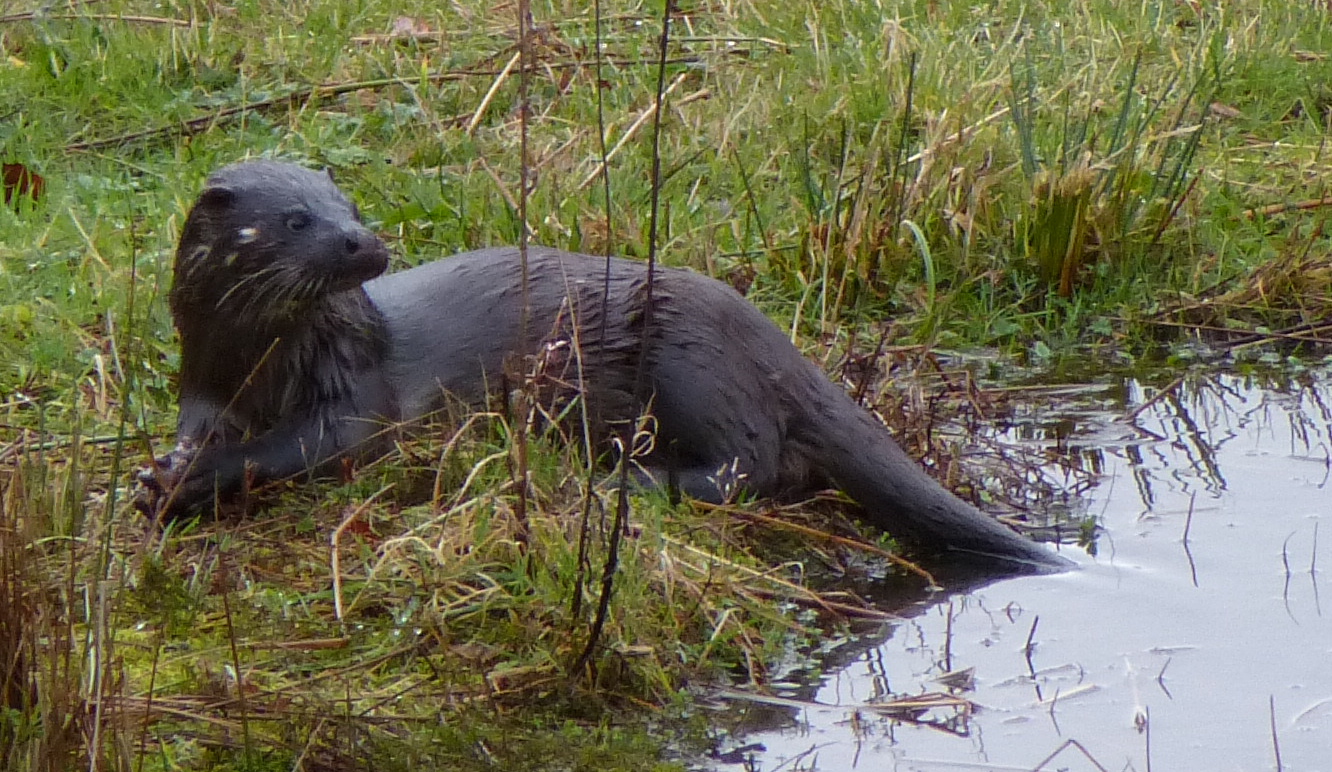In 1998 we became caretakers of one acre of land, facing a bog and running alongside a little stream. Here we built a wooden clad house with most of the windows facing south and west. The sun through the windows, complemented in winter by the wood-fired range, provides all our home heating. Solar panels in the summer, and the wood-fired range in the winter, heat the water.
The Garden
The (no-dig) vegetable garden began in 1998 a few months before we built our home and throughout the years has provided almost all our vegetables and most of our fruit. Since then I have been planting for fruit, food, scent, wildlife and for beauty. I love plants in equal measure whether they are rare or common.
The garden has been managed from the very beginning by hand weeding and mulching. I encourage the plants that I like most to self-seed and that helps to build up a seed bank of those plants in the soil. Pests and diseases are managed by encouraging natural predators (wasps eat greenfly) and by having garden practices that lead to healthy soil which leads to healthy plants. Sometimes this isn't enough and I need to remove the problem, such as cutting back parts of plants showing signs of disease or die-back.
 |
| The vegetable garden in July. |
We coppice hazel and willow for wattle fences and bean poles. I love to grow plants from seed and also to save seeds to grow and share. The Irish seed savers, the Irish garden plant society and the Alpine garden society have wonderful seed distribution schemes and many new plants come to our garden this way and via seed exchanges.
| ||
We
first approached our local bee keepers association with an interest in keeping bees
in 2001. A local member suggested keeping his hives here, which he did
for a few years. In 2013 Angus built our first top bar hives and I began the long overdue journey of keeping bees. I spent a few years immersing myself in observing and learning about honey bees and became thoroughly bee-sotted!
This bee-love boosted my already enthusiastic passion for plants and contributed to a deeper appreciation for the interconnected web of reciprocal relationships within the garden. The bees are kept naturally, so far, touch wood, they are thriving, providing honey, wax and so much joy.
Kerry cows
In 2009 we finally made the long awaited leap to keeping a family cow. Now, I cannot imagine life without her. She gives Milk for butter, cheese and cream and beef from her grown bull calves. By grazing the pasture she keeps open areas in the landscape increasing edge, light and diversity, including a field of white clover for the bees in June. She is all goodness and the centre pivot in the circle of abundance that these acres provide.
Moths & Wildlife
Crocus, a good pollen source for honeybees and bumblebees, in the early Spring meadow with top bar hives in the background.
Kerry cows
In 2009 we finally made the long awaited leap to keeping a family cow. Now, I cannot imagine life without her. She gives Milk for butter, cheese and cream and beef from her grown bull calves. By grazing the pasture she keeps open areas in the landscape increasing edge, light and diversity, including a field of white clover for the bees in June. She is all goodness and the centre pivot in the circle of abundance that these acres provide.
Amber.
Angus has a lifelong interest in wildlife, especially, moths, birds, butterflies, dragonflies and other insects. His interest in moths began in earnest in 2002. In 2013 Angus received the distinguished recorders award from the national biodiversity data centre. Over the years we have had many special visitors....
Hummingbird hawk moth.
Swans nested here from 2002-2011, until the trees became too tall for them to fly in and out easily.
Otters are regular pond visitors.
Crafts
In the shorter daylight hours of winter I spend a little less time outdoors and along with seed saving and researching plants I also enjoy making soap, candles and other crafts with our children.
Coloured beeswax candles
The weather Station.
Angus started recording weather in 1999. Since 2002 records have been submitted to Met Eireann and in June 2018 the station was automated. Manual records are still kept to maintain accuracy during the transition.
 |
| Rainbow over the weather station. |
This blog is just a small window into our days, led by the pictures I choose to take. I don't photograph the dishes I wash every day or the mess of a family home!
When we have visitors I leave the camera away and enjoy the company and I don't share our many other outside interests here. This blog is mostly about this place, it's not the whole story, just pictures I like.
Hope you enjoy your visit,
Kim
One day this little fairy appeared in the garden, Zoe (10 yrs at the time) made it from what was on hand... a marigold, a daffodil and a peach stone with dandelion on top.










